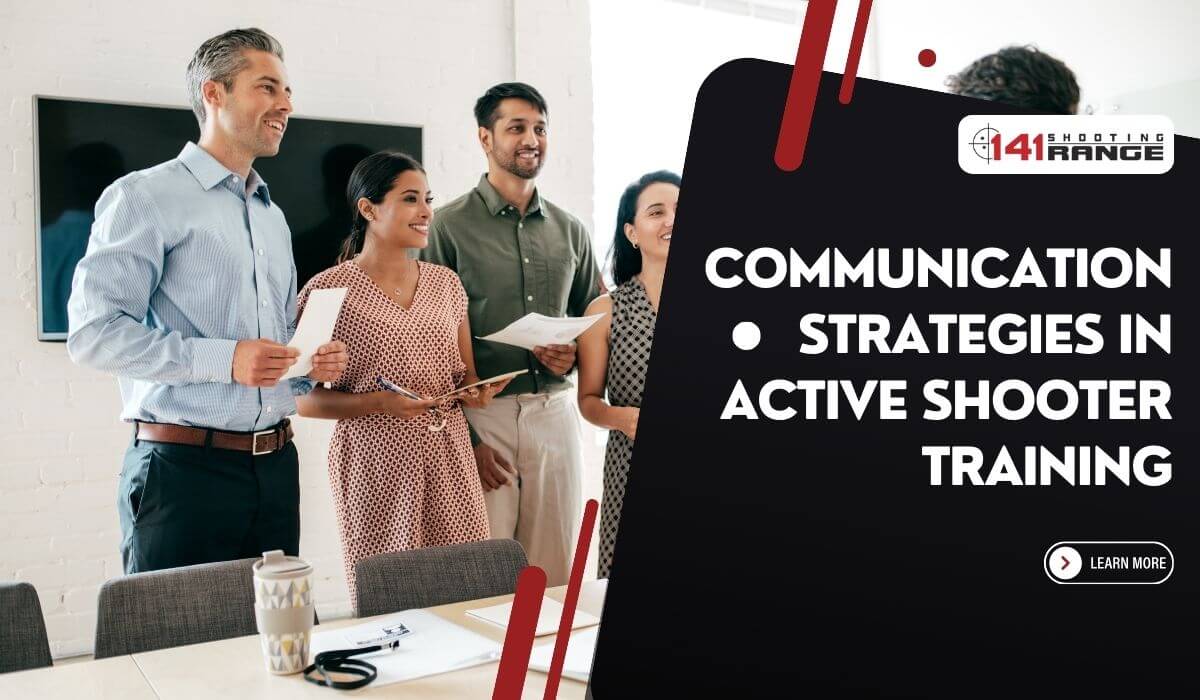Good communication is a lifeline, not simply an important component in the terrifying and complicated world of active shooter situations. It shows a forward-thinking attitude toward readiness, where smart and clear communication is paramount in navigating a chaotic environment and reducing casualties.
Effective communication tactics are critical in active shooter training to reduce risks, coordinate reactions, and create a safer workplace. Practicing effective communication techniques, not just training, is essential to dealing with the disturbing reality of active shooter situations.
effective communication strategies in active shooter training
Communication and Its Role:
Active shooter training is one of the most high-stakes situations where an understanding of the importance of communication is essential. Coordinated responses to such crises rely on effective communication to influence outcomes and guarantee the safety of everyone involved. Active shooter scenarios, where disorder and ambiguity predominate, require communicating quickly and accurately.
This first look will examine how active shooter training uses communication tactics. As well as helping people prepare for emergencies, these tactics improve coordination among responders and ensure everyone’s safety.
Comprehensive planning for preparation:
Effective response in any crisis, especially in active shooter scenarios, hinges on preparation through thorough planning. Disaster preparedness emphasizes the importance of meticulous planning, emphasizing the old saying, “Failing to plan is planning to fail.” This idea becomes even more important when every second matters in an active shooter situation.
A comprehensive planning process includes risk assessment, communication protocols, responsibilities, and methods for disseminating vital information. A well-structured plan is a shield against chaos and a roadmap for responding. It equips individuals and organizations with the strategies and tools to overcome the unthinkable.
Ensure clear communication protocols are in place:
For a coordinated and speedy response, it is essential to establish transparent channels of communication during active shooter training. As such crucial situations are fraught with disorder and ambiguity, it is paramount to communicate clearly and articulately. It is crucial to set up clear communication channels during an active shooter situation. In addition to plain language, this fundamental component includes the specified methods for delivering information. Communication in times of crisis can prevent confusion, lead people to safety, and unite people.
Real-time updates using technology:
Technology is a key component in strengthening reaction capabilities in the ever-changing world of active shooter training. Real-time updates are one of the many components of readiness that greatly improve communication tactics.
Modern technologies, such as mass notification systems and mobile applications, can efficiently and quickly distribute crucial information during an active shooter situation. Using real-time communication, we can reduce damage and ensure people’s safety more quickly and strategically.
Simulation-based training:
Simulated environments are indispensable tools in many fields because they can practice skills, solve problems, and improve decision-making skills. A simulation that mimics real-world situations can provide participants with an authentic experience.
Healthcare workers and first responders can benefit from simulated settings when honing their emergency response and crisis management skills. Encouraging initiative gives trainees the knowledge, skills, and self-assurance to deal with challenging real-world situations.
The coordination of first responders:
Coordinating between first responders is crucial in the complex and high-stakes world of emergency response. The backbone of an effective intervention in situations such as active shooter incidents is seamless coordination. This entails the harmonious collaboration of law enforcement, emergency medical services, and other pertinent entities.
First responders’ coordination plays a critical role in managing crises. We emphasize clear communication, mutual understanding of roles, and a synchronized approach to minimize response time. This maximizes the chances of a positive outcome.
Challenges in Communication:
Especially in high-stress situations involving active shooters, it is essential to be able to communicate clearly. Prepare people and organizations for potential dangers by communicating information quickly and accurately.
A unified and effective response requires understanding and reducing these difficulties, such as dealing with panic, background noise, or both. To create a safer, more prepared community, we explore the tactics and ideas needed to overcome communication barriers.
Debriefing and communication post-incident:
An active shooter scenario requires debriefing and post-event communication to facilitate healing. It is beneficial for those impacted by the incident and the responders to communicate honestly and openly.
A post-incident debriefing helps individuals involved deal with the emotional impact of the incident and reflect on what went well and where things can be improved. This study explores the relevance of using post-incident debriefing and communication to promote recovery, education, and general health following stressful events.
Continual training and adaptability:
Staying ahead of potential dangers in active shooter training requires continuous growth. The necessity for training beyond initial preparations becomes apparent in light of changing challenges and developing technologies.
The newest communication tactics, technology, and best practices are crucial to successfully navigating active shooter situations. Furthermore, dangers always change, so preparedness strategies must be adaptable and dynamic. Continuous training and practice adaptation prepare individuals and organizations for unexpected challenges.
Conclusion:
Regarding active shooter training, communicating effectively is as important as learning skills. Such vital crises require constant information, precise instructions, and coordinated reactions.
Transparent procedures, evolving technology, and flexibility are in use to emphasize lifelong learning. Due to the ever-changing nature of modern dangers, continuous training is essential to keep individuals and organizations well-prepared. Communities can better address unpredictable challenges. Communication systems that build resilience to active shooter scenarios are in place.
Frequently Asked Questions:
Clear communication facilitates coordination, minimizes confusion, and enhances overall readiness.
Mobile apps and mass notification systems facilitate real-time updates and information dissemination.
Every organization or setting has unique needs and challenges, so strategies should be adaptable.
The leadership must maintain calm, provide clear instructions, and instill confidence among those affected.
It is imperative to stay current on the latest communication strategies, technologies, and best practices through ongoing training.
Communicating openly with the community is essential for reassurance, guidance, and prevention.
There are several challenges, including noise, panic, and the need to make quick decisions, highlighting the importance of addressing these factors in training.
A proactive and prepared community can benefit from transparent and informed communication.







